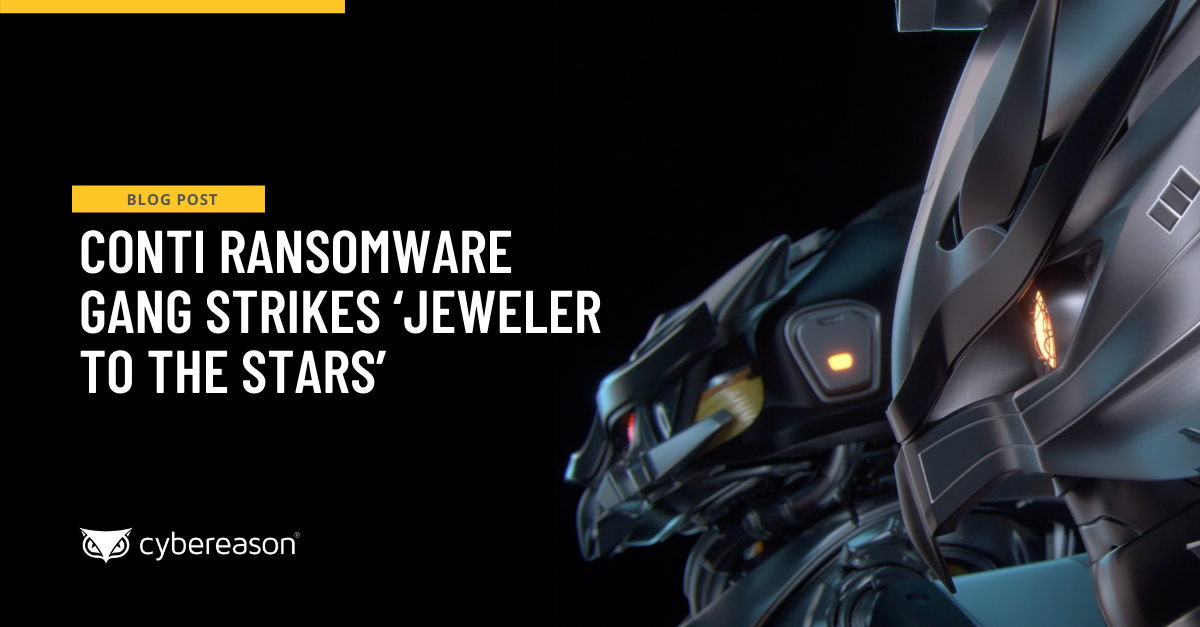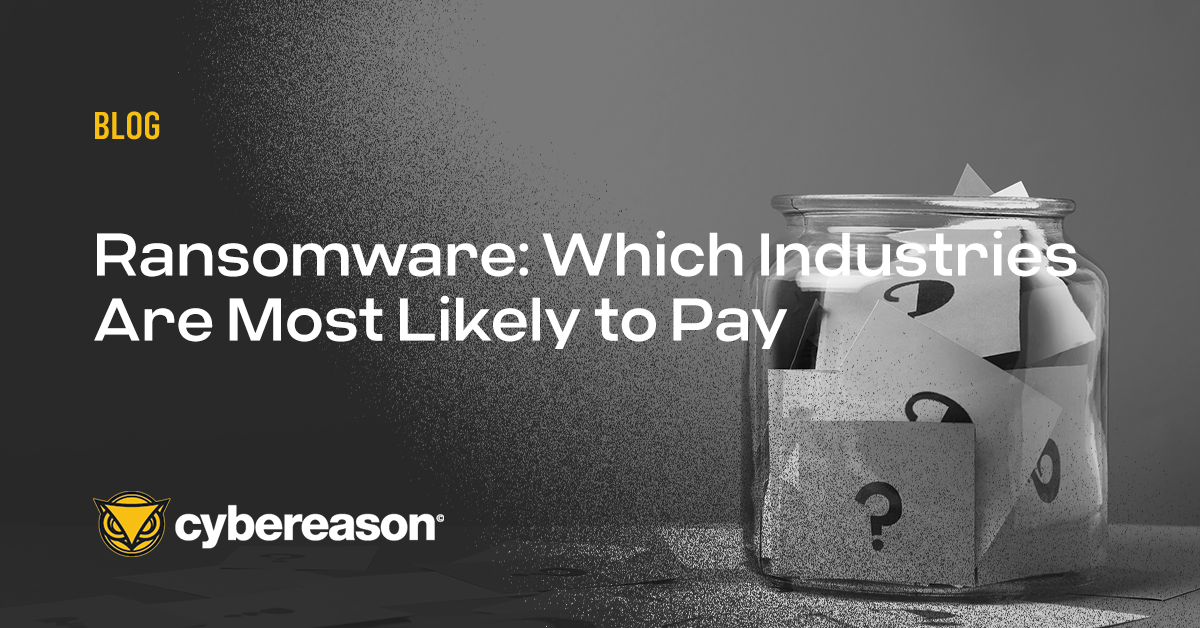
Conti Ransomware Gang Strikes ‘Jeweler to the Stars’
Cybereason has been tracking the Conti ransomware gang since 2020 and they have conducted hundreds of attacks against hospitals, law enforcement agencies and critical infrastructure operators...

Cybereason Team
A recent study by Cybereason, Ransomware: The True Cost to Business 2022, revealed that 73% of respondents had experienced a ransomware attack in the last 24 months. Of those respondents, 28% said their organizations paid the ransom. A separate survey of cybersecurity leaders conducted by WSJ Pro Research found that 42.5% of respondents said they would consider paying a ransom.
Of those leaders who said their organizations would consider paying, 74% worked in the construction industry, 51% worked in the technology industry, and 43% worked for an energy company or utility.
Source: WSJ Pro Research
Research from CyberSaint tells a similar story: the provider of cybersecurity and IT risk and compliance software found that 43% of survey respondents at energy companies and utilities said their organizations paid ransoms, and more than one-third of respondents across the IT, retail, and business and professional services sectors said their organizations did the same.
Perhaps not surprisingly, many of these industries that are more likely to pay are also more likely to be targeted by ransomware actors. According to research from Nordlocker, the top industries hit by ransomware include:
In our own research, Cybereason found the industry verticals most likely to have been affected by a ransomware attack included legal (92%), financial services (78%), manufacturing (78%), and human resources services (77%).
What makes some sectors more likely to pay a ransom than others? For construction companies, a ransomware attack may mean plans are lost, and therefore, work on large contracts grinds to a halt, putting immediate deadlines and downstream projects in the company’s portfolio at risk.
For tech firms, a ransomware attack could compromise highly sensitive and competitive assets like intellectual property, product plans, or customer information. The stakes are even higher for utilities and healthcare providers, where ransomware attacks can cause power failures or prevent medical care. In these and other industries, the reasons to pay are compelling.
But so are the reasons not to pay.
In general, companies pay ransoms to prevent business disruption and expedite data recovery, but our research finds that those and other negative outcomes tend to occur anyway:
Ransomware attacks may be inevitable, but they’re also preventable. Only Cybereason remains undefeated in the fight against ransomware, securing the highest-ever scores in MITRE ATT&CK testing. The Cybereason Defense Platform detects and automatically ends ransomware attacks in their earliest stages, long before ransomware detonates on an endpoint, so you don’t have to worry about losing data or paying ransoms and getting hit again.

Cybereason is dedicated to partnering with Defenders to end attacks at the endpoint, in the cloud and across the entire enterprise ecosystem. Only the AI-driven Cybereason XDR Platform provides predictive prevention, detection and response that is undefeated against modern ransomware and advanced attack techniques. The Cybereason MalOp™ instantly delivers context-rich attack intelligence across every affected device, user and system with unparalleled speed and accuracy. Cybereason turns threat data into actionable decisions at the speed of business.
All Posts by Cybereason Team
Cybereason has been tracking the Conti ransomware gang since 2020 and they have conducted hundreds of attacks against hospitals, law enforcement agencies and critical infrastructure operators...
.png)
The study once again finds that ‘it doesn’t pay-to-pay’ a ransom demand, as 80% of organizations that paid were hit by ransomware a second time, with 68% saying the second attack came in less than a month with threat actors demanding a higher ransom amount...

Cybereason has been tracking the Conti ransomware gang since 2020 and they have conducted hundreds of attacks against hospitals, law enforcement agencies and critical infrastructure operators...
.png)
The study once again finds that ‘it doesn’t pay-to-pay’ a ransom demand, as 80% of organizations that paid were hit by ransomware a second time, with 68% saying the second attack came in less than a month with threat actors demanding a higher ransom amount...
Get the latest research, expert insights, and security industry news.
Subscribe